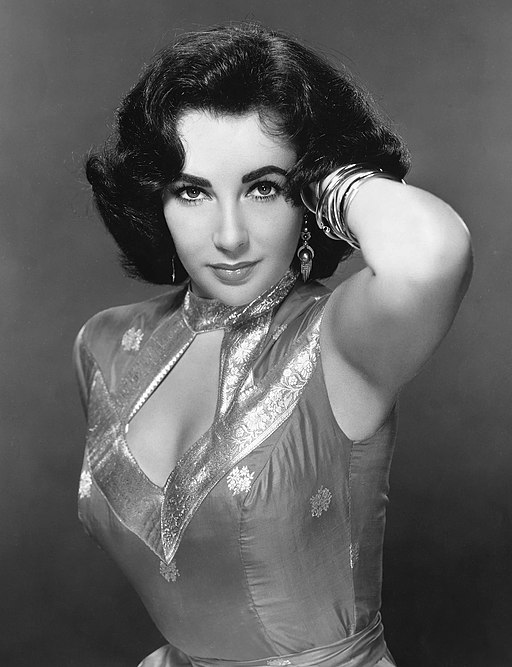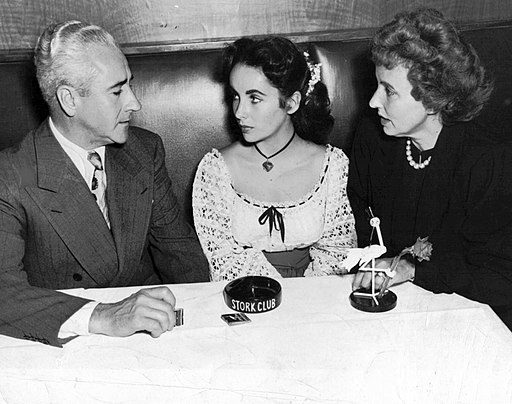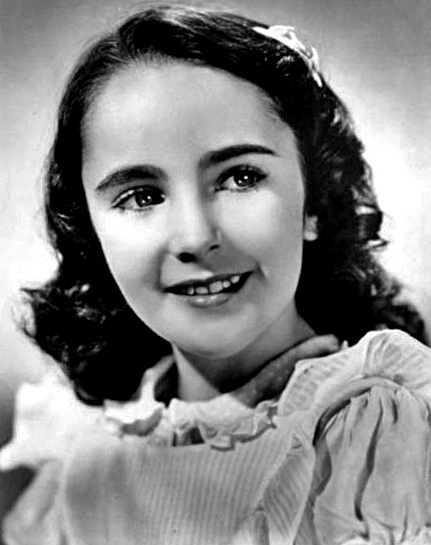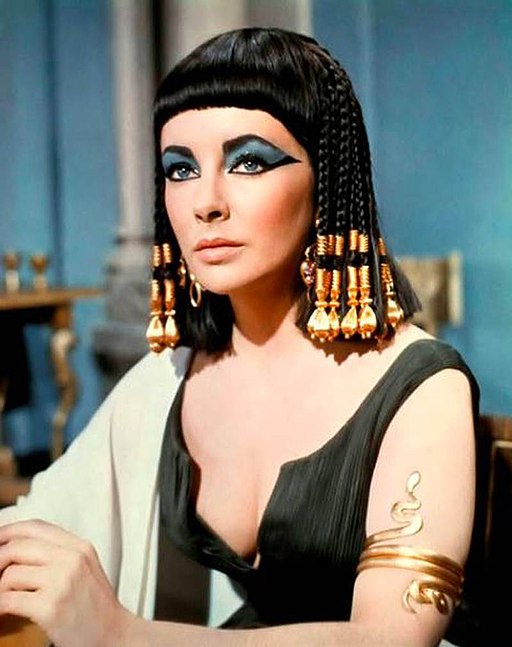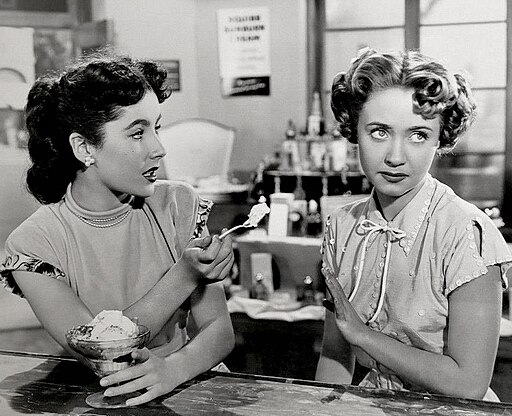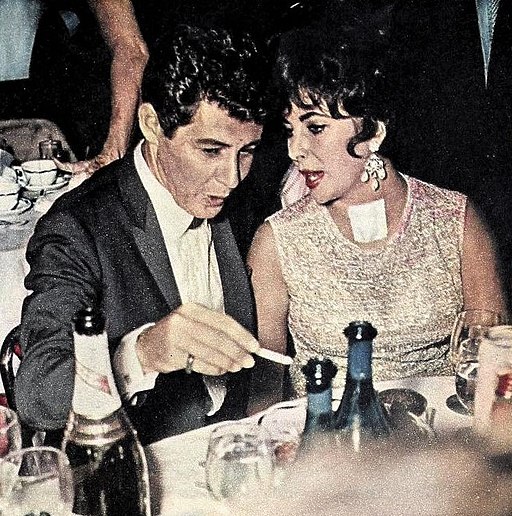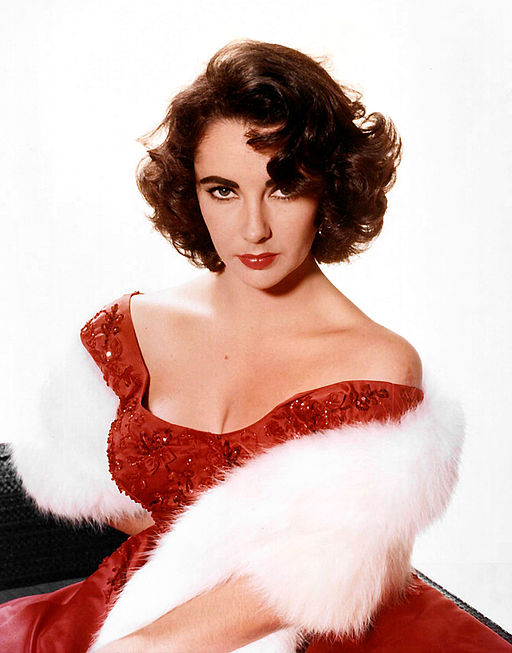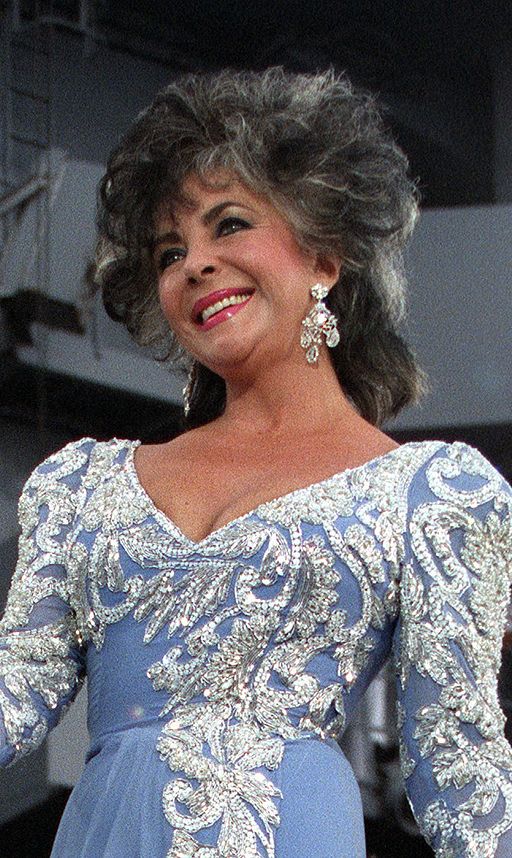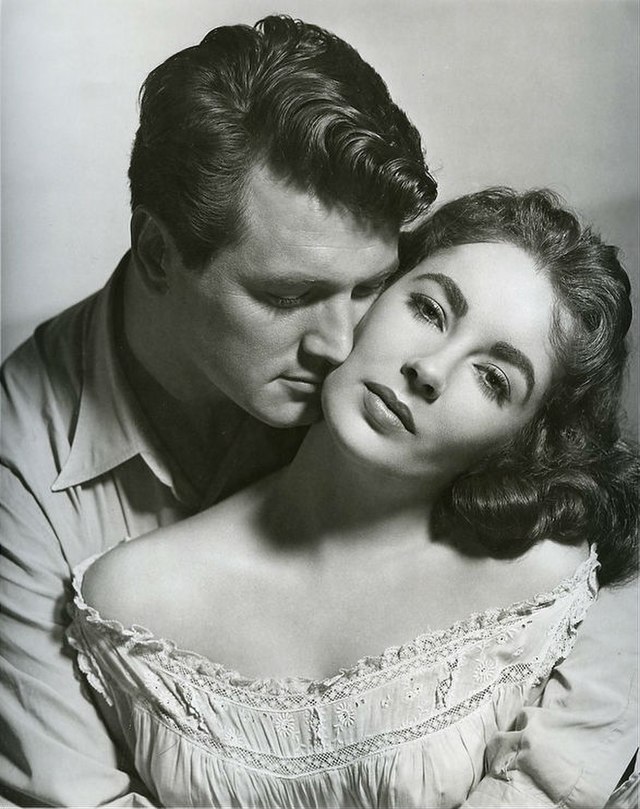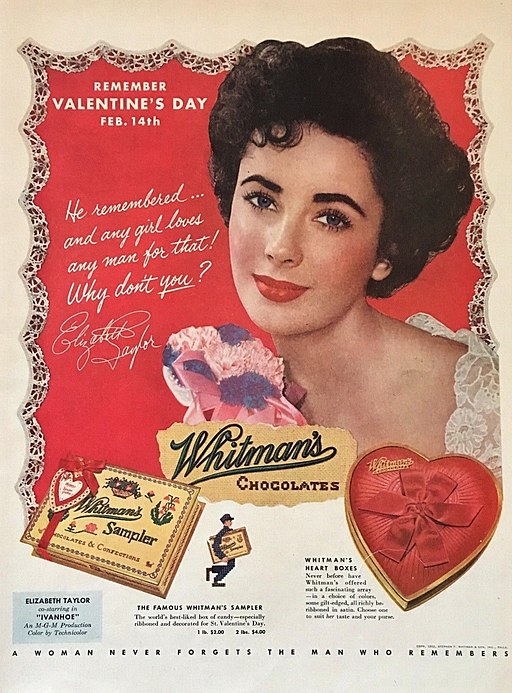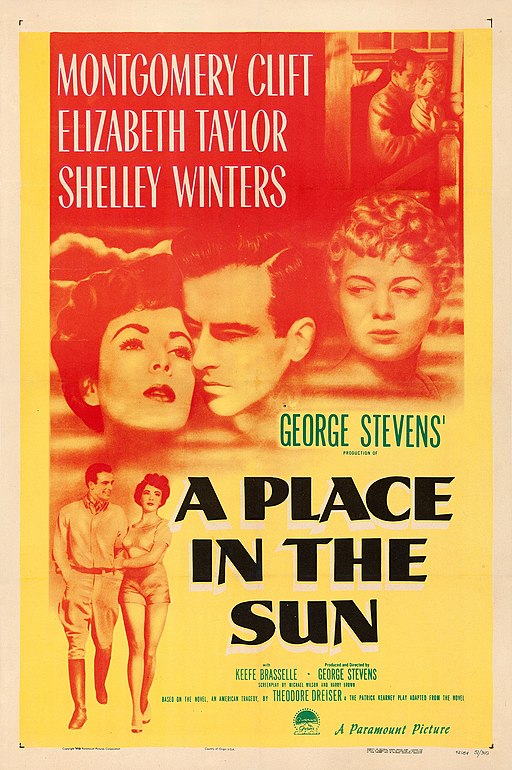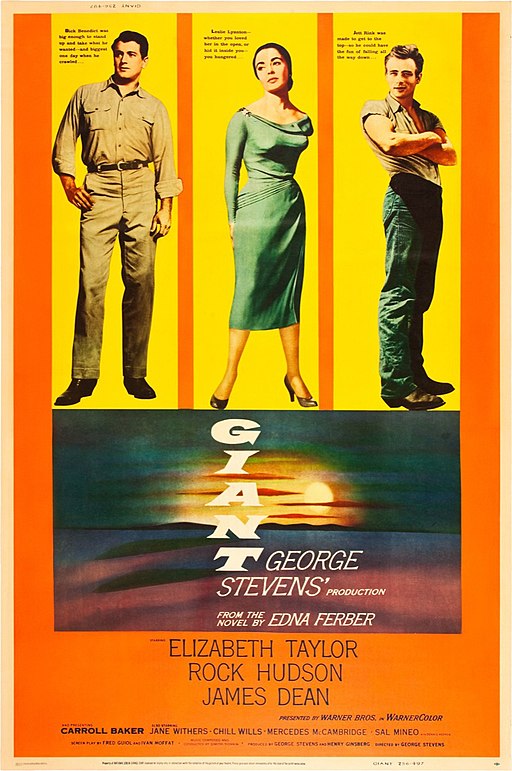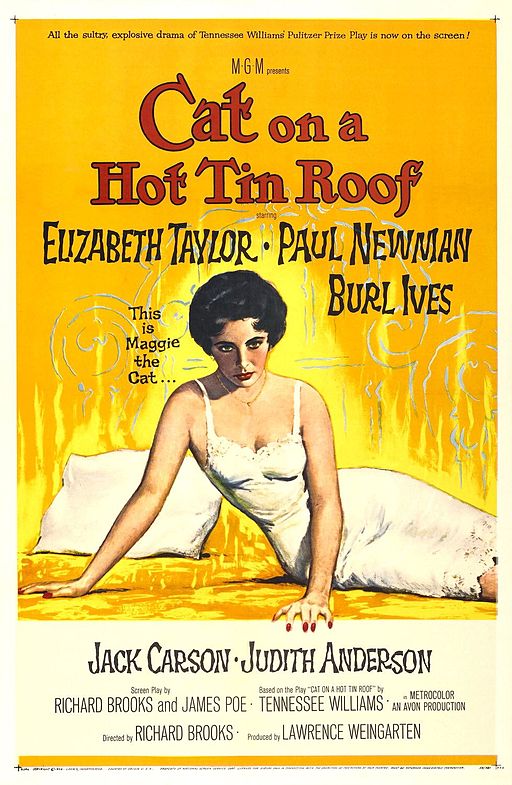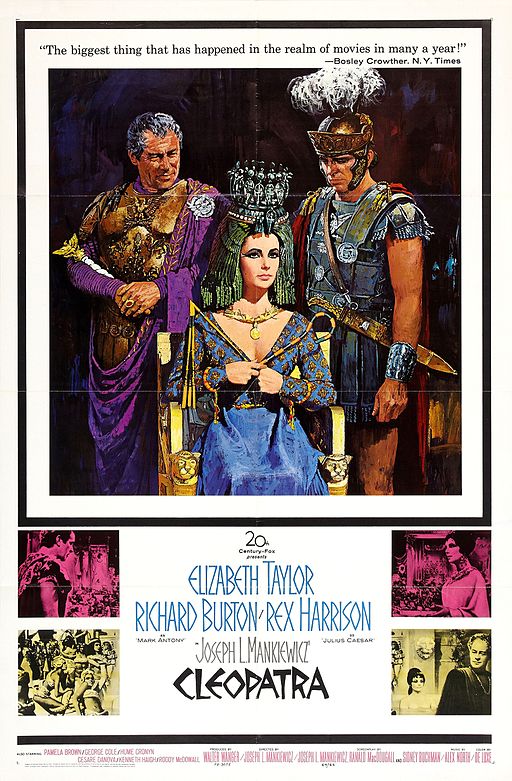Elizabeth Taylor
back| Full Name | Elizabeth Rosemond Taylor |
| Stage Name | Elizabeth Taylor |
| Born | February 27, 1932 |
| Birthplace | Hampstead, London, England, UK |
| Died | March 23, 2011 |
| Buried | Forest Lawn Memorial Park, Glendale, California, USA |
| Married to | Conrad |
| Children | Michael Wilding Jr., Christopher Wilding, Liza Todd, Maria Burton |
| Notable films | National Velvet - A Place in the Sun - Giant - Cat on a Hot Tin roof - Butterfield 8 - Cleopatra - Who's afraid of Virginia Woolf? |
Elizabeth Taylor
The “La Liz” embodiment of Hollywood's golden age of glamour
Elizabeth Taylor was an iconic British-American actress born on February 27, 1932, in London, England. Recognized early for her striking beauty, Taylor began her film career as a child in the 1940s and emerged as a Hollywood star in the 1950s, her violet eyes and talent capturing global attention.
She won two Academy Awards for Best Actress for her performances in "Butterfield 8" (1960) and "Who's Afraid of Virginia Woolf?" (1966). Her other significant films include "National Velvet," "A Place in the Sun," "Cat on a Hot Tin Roof," and "Cleopatra," which cemented her status as a screen legend.
Taylor was equally famous for her vibrant personal life, including her extensive activism for HIV/AIDS awareness and her multiple marriages, most notably to actor Richard Burton. Her public persona was as captivating as her screen roles, marked by resilience, glamour, and a passion for life.
Taylor passed away on March 23, 2011, leaving behind a legacy as one of the 20th century's most enduring stars.
Related
Elizabeth Taylor
Biography, analysis of her acting style and all her movies
Elizabeth Rosemond Taylor, known simply as Elizabeth Taylor, was a British-American actress born on February 27, 1932, in Hampstead, London. She was the daughter of American art dealers who returned to the United States with their family at the onset of World War II, settling in Los Angeles.
Taylor's striking beauty and violet eyes landed her a contract with MGM at the young age of 10, and she swiftly transitioned from a cherubic child in "There's One Born Every Minute" (1942) to a burgeoning star with "National Velvet" (1944), which established her as a box-office sensation.
Throughout the 1950s and 1960s, Taylor's career blossomed as she took on more complex roles in films such as "A Place in the Sun," "Giant," and "Cat on a Hot Tin Roof." Her talent was recognized with two Academy Awards for Best Actress for her performances in "Butterfield 8" and the gritty drama "Who's Afraid of Virginia Woolf?"
Off-screen, Taylor's life was marked by its own drama; she was married eight times, twice to the charismatic actor Richard Burton, whom she met on the set of the lavish production "Cleopatra." Their tumultuous relationship was fodder for the media, enthralling and scandalizing the public.
Taylor was also known for her humanitarian efforts, particularly her work as an advocate for AIDS research and awareness. After her friend Rock Hudson died from AIDS-related complications, she co-founded the American Foundation for AIDS Research (amfAR) and later established The Elizabeth Taylor AIDS Foundation.
Cause of Death
Elizabeth Taylor passed away on March 23, 2011, at the age of 79. The cause of her death was congestive heart failure, a condition she had been battling for many years. Taylor's health had been fragile over the last two decades of her life, with numerous medical issues that included heart problems, and she had been hospitalized several times for complications related to congestive heart failure.
Congestive heart failure is a chronic condition in which the heart does not pump blood as well as it should, which can lead to a buildup of fluid around the heart and affect the efficiency of the kidneys, leading to fluid retention in the lungs and other parts of the body.
Throughout her life, Taylor was known for her medical problems. She had more than 40 surgeries, including a tracheotomy, which famously saved her life during a bout with pneumonia in 1961. Her health issues were often as public as her private life, and she showed considerable resilience in facing them.
Elizabeth Taylor winning the Oscar for "Butterfield 8" in 1961:
Elizabeth Taylor spouses:
Elizabeth Taylor was as famous for her personal life, particularly her marriages, as she was for her film career. She was married eight times to seven men (she married Richard Burton twice).
- Conrad "Nicky" Hilton Jr. (1950-1951): Taylor's first marriage was to the hotel heir when she was just 18. The marriage was troubled from the start and lasted only nine months.
- Michael Wilding (1952-1957): Her second marriage was to the English actor Michael Wilding, who was 20 years her senior. They had two sons together, Michael and Christopher. The marriage ended in divorce after five years.
- Mike Todd (1957-1958): Taylor found a passionate relationship with film producer Mike Todd, who was one of the few husbands she claimed to have truly loved. They had a daughter, Elizabeth Frances "Liza" Todd. Their marriage was cut short by Todd's death in a plane crash in 1958.
- Eddie Fisher (1959-1964): Taylor's marriage to singer Eddie Fisher was controversial because Fisher left his wife, actress Debbie Reynolds, to be with Taylor, which was a huge scandal at the time. They divorced after Taylor started a relationship with Richard Burton.
- Richard Burton (1964-1974; 1975-1976): Perhaps her most famous relationship, Taylor married Burton twice. Their first marriage lasted ten years, during which they starred in several films together and led a lavish lifestyle that was the constant subject of tabloid speculation. They adopted a daughter, Maria. They divorced in 1974, remarried in 1975, and divorced again in 1976.
- John Warner (1976-1982): After her marriages to Burton, Taylor married politician John Warner, who would later become a U.S. Senator. Her time as a politician's wife was reportedly unhappy, and they divorced after six years.
- Larry Fortensky (1991-1996): Her last marriage was to construction worker Larry Fortensky, whom she met during a stay at the Betty Ford Center. The wedding took place at Michael Jackson's Neverland Ranch. They divorced after five years.
Taylor's relationships were often marked by intense passion and, in many cases, significant public attention. Her life with her spouses included considerable drama, but she often spoke fondly of her marriages, suggesting that each had brought something important to her life.
Analysis of Elizabeth Taylor’s acting style:
Elizabeth Taylor's acting style was characterized by her ability to convey complex emotions and her remarkable screen presence. Some aspects that defined her performances include:
Emotional Intensity
Taylor was known for her capacity to access and portray intense emotions, allowing audiences to feel the depth of her character's experiences. Her eyes were particularly expressive, often described as the windows to the soul of her characters.
Glamorous Authenticity
Despite her glamorous image, Taylor brought a sense of authenticity to her roles. She could portray women from different walks of life with genuineness, whether she was playing a jilted lover, a frustrated wife, or a historical figure.
Vulnerability and Strength
Taylor's roles often showcased a blend of vulnerability and strength. She could move seamlessly from moments of fragility to expressions of formidable will and determination, making her characters multidimensional and relatable.
Chemistry with Co-Stars
She had an uncanny ability to generate chemistry with her co-stars, which added a layer of believability to her romantic roles. Her pairings with actors like Richard Burton, Paul Newman, and Montgomery Clift are memorable, as they seemed to elevate each other's performances.
Adaptability
Across her career, Taylor showed a remarkable ability to adapt to a wide range of roles, from her child actress days to mature, challenging roles that required a deep understanding of the human condition.
Voice and Diction
Taylor's voice was another tool she utilized effectively; her articulate diction and ability to project her voice gave her characters an authoritative presence when required.
Physicality
Her use of physicality was subtle but effective. She knew how to use her appearance to convey her character's state of mind, from the poised and elegant to the disheveled and distraught.
In essence, Elizabeth Taylor's acting style was a combination of innate talent, learned skill, and an intuitive understanding of the characters she portrayed. She was not afraid to take on challenging or unglamorous roles that pushed her out of her comfort zone, which allowed her to maintain a long and varied career. Her ability to captivate audiences with her luminous on-screen presence has secured her a place as one of Hollywood's enduring icons.
Remarkable quotes from Elizabeth Taylor:
- On Success and Failure: "Success is a great deodorant. It takes away all your past smells."
- On Self-Worth: "I've always admitted that I'm ruled by my passions."
- On Resilience: "I am a survivor. I am like a cockroach, you just can't get rid of me."
- On Living Fully: "I feel very adventurous. There are so many doors to be opened, and I'm not afraid to look behind them."
- On Love: "I've only slept with men I've been married to. How many women can make that claim?"
- On Ageing: "It's not the having, it's the getting."
- On Her Public Image: "I don't entirely approve of some of the things I have done, or am, or have been. But I'm me. God knows, I'm me."
- On Marriage: "I am a very committed wife. And I should be committed too – for being married so many times."
- On Acting: "Acting is, to me now, artificial. Seeing life without the distortion of new experiences."
Elizabeth Taylor – All her notable movies
1942
- "There's One Born Every Minute" – Elizabeth Taylor's film debut where she plays a small role in a comedy about a man selling phony real estate.
1943
- "Lassie Come Home" – A heartwarming tale about a Yorkshire boy and his dog Lassie, with Taylor in the role of Priscilla.
1944
- "The White Cliffs of Dover" – A drama where Taylor appears in a small role involving an American woman who marries a British pilot.
1946
- "Courage of Lassie" – Another Lassie film, this one features Taylor as a young girl who helps a dog trained for war adjust to a peaceful life.
- "National Velvet" – Taylor stars as Velvet Brown, a 12-year-old girl who trains a horse for the Grand National steeplechase.
1947
- "Life with Father" – A comedy where Taylor plays Mary Skinner, a young girl in late 19th century New York.
- "Cynthia" – A drama featuring Taylor as a frail girl who struggles to gain her father's acceptance.
1948
- "A Date with Judy" – A musical romance with Taylor as Carol Pringle, a high school student involved in romantic mix-ups.
- "Julia Misbehaves" – A romantic comedy in which Taylor has a supporting role as Susan Packett.
1949
- "Little Women" – Taylor portrays Amy March in the film adaptation of Louisa May Alcott's novel about four sisters growing up during the American Civil War.
- "Conspirator" – A suspense drama featuring Taylor as Melinda Greyton, the wife of a suspected spy.
1950
- "The Big Hangover" – Taylor stars as Mary Belney in this comedy about a man allergic to alcohol.
- "Father of the Bride" – A classic comedy where Taylor plays Kay Banks, a young woman whose upcoming wedding is a source of comic turmoil for her father.
- "Father's Little Dividend" – The sequel to "Father of the Bride," with Taylor's character now expecting a child.
1951
- "Quo Vadis" – A historical drama where Taylor has an uncredited cameo.
- "A Place in the Sun" – Taylor stars as Angela Vickers in a critically acclaimed drama about love and ambition.
- "Callaway Went Thataway" – A Western comedy with Taylor making a cameo as herself.
1952
- "Love Is Better Than Ever" – A romantic comedy where Taylor plays Anastacia "Stacie" Macaboy, a dance teacher who falls for a Broadway agent.
1953
- "The Girl Who Had Everything" – A drama about a lawyer's daughter (Taylor) who gets involved with a man her father is trying to put in jail.
1954
- "Rhapsody" – Taylor stars as a wealthy woman involved in a love triangle with a violinist and a pianist.
- "Beau Brummell" – A historical drama with Taylor as Lady Patricia Belham.
- "The Last Time I Saw Paris" – Taylor plays Helen Ellswirth, a woman caught in a tumultuous romance in post-World War II Paris.
1956
- "Giant" – An epic drama where Taylor plays Leslie Lynnton Benedict, a strong-willed woman dealing with family and prejudice in Texas.
1957
- "Raintree County" – A Civil War drama featuring Taylor as Susanna Drake, a southern belle with a troubled past.
1958
- "Cat on a Hot Tin Roof" – Taylor stars as Maggie the Cat in the adaptation of Tennessee Williams' play about a troubled Southern family.
- "Suddenly, Last Summer" – Another of Williams' adaptations, Taylor plays Catherine Holly, a woman facing lobotomy after the death of her cousin.
1959
- "Suddenly, Last Summer" (continued in theaters).
1960
- "Butterfield 8" – Taylor won an Oscar for her role as Gloria Wandrous, a call girl looking for a way out.
1963
- "Cleopatra" – Taylor takes on the epic role of Cleopatra in the historical drama that chronicles the queen's manipulation of Roman politics and power.
1966
- "Who's Afraid of Virginia Woolf?" – Taylor delivers an Academy Award-winning performance as Martha, a middle-aged wife in an emotionally volatile relationship.
1967
- "The Taming of the Shrew" – In this adaptation of Shakespeare's play, Taylor plays the fiery Katharina.
1968
- "Boom!" – Taylor portrays Flora 'Sissy' Goforth, a terminally ill woman living on a Mediterranean island.
- "Secret Ceremony" – Taylor plays Leonora, a prostitute who enters into a strange relationship with a troubled young woman.
1972
- "Under Milk Wood" – Taylor plays Rosie Probert in this adaptation of Dylan Thomas's play.
- "Hammersmith Is Out" – A comedy-drama where she plays Jimmie Jean Jackson, alongside Richard Burton.
1973
- "Ash Wednesday" – Taylor portrays Barbara Sawyer, a woman who undergoes plastic surgery in an attempt to save her marriage.
- "Divorce His, Divorce Hers" – A TV movie about the disintegration of a marriage, with Taylor and Burton playing the lead roles.
1974
- "The Driver's Seat" (also known as "Identikit") – Taylor stars as Lise, a woman on a journey to find her ideal man, who may also be a serial killer.
1976
- "The Blue Bird" – A fantasy film in which Taylor plays multiple roles including Mother, Maternal Love, and Luxury.
- "Victory at Entebbe" – A made-for-TV movie about the famous hijacking incident, with Taylor as Edra Vilnofsky.
1977
- "A Little Night Music" – A film adaptation of the Stephen Sondheim musical, with Taylor as the aging actress Desirée Armfeldt.
1978
- "Return Engagement" – A television film featuring Taylor in the role of Dr. Emily Loomis.
1979
- "Winter Kills" – Taylor has a cameo role in this political thriller.
1980
- "The Mirror Crack'd" – Taylor plays Marina Rudd, a film star who is at the center of a murder mystery. The film is based on Agatha Christie's Miss Marple story.
1981
- "General Hospital" (TV Series) – Taylor made a special guest appearance on the popular soap opera as Helena Cassadine.
1983
- "Between Friends" – A TV movie with Taylor and Carol Burnett portraying two friends facing life's challenges.
1984
- "Hotel" (TV Series) – Taylor guest stars in an episode of the television series.
1985
- "Malice in Wonderland" – A television movie where Taylor portrays gossip columnist Louella Parsons.
- "North and South" (TV Miniseries) – Taylor appears in a cameo role in this Civil War drama.
1987
- "Poker Alice" – Taylor plays Alice Moffit, a professional poker player in the Old West, in this TV movie.
1988
- "Young Toscanini" – She appears as Nadina Bulichoff in a film about the early life of conductor Arturo Toscanini.
1989
- "Sweet Bird of Youth" – A TV movie adaptation of Tennessee Williams' play, with Taylor as aging movie star Alexandra Del Lago.
1991
- "Sweet Bird of Youth" – A made-for-TV adaptation of the Tennessee Williams play where Taylor reprised the role of Alexandra Del Lago, a fading Hollywood star.
1992
- "The Young Indiana Jones Chronicles" (TV Series) – She made a cameo appearance in the episode "Paris, October 1916".
1993
- "The Simpsons" (TV Series) – Taylor guest-starred as herself, providing the voice of Maggie Simpson's first word in the episode "Lisa's First Word".
1994
- "The Flintstones" – A live-action film based on the classic cartoon, in which Taylor played Pearl Slaghoople, Wilma Flintstone's mother. This would be her final theatrical film appearance.
Awards and Nominations:
Academy Awards (Oscars):
- Best Actress in a Leading Role, Nomination for "Raintree County" (1958)
- Best Actress in a Leading Role, Nomination for "Cat on a Hot Tin Roof" (1959)
- Best Actress in a Leading Role, Nomination for "Suddenly, Last Summer" (1960)
- Best Actress in a Leading Role, Won for "Butterfield 8" (1961)
- Best Actress in a Leading Role, Won for "Who's Afraid of Virginia Woolf?" (1967)
- Received the Jean Hersholt Humanitarian Award (1993)
BAFTA Awards:
- Best Foreign Actress, Won for "Cat on a Hot Tin Roof" (1959)
- Best Foreign Actress, Won for "Suddenly, Last Summer" (1960)
- Best Actress, Nomination for "Who's Afraid of Virginia Woolf?" (1967)
Golden Globe Awards:
- Best Actress in a Motion Picture – Drama, Won for "Butterfield 8" (1961)
- Best Actress in a Motion Picture – Drama, Nomination for "Who's Afraid of Virginia Woolf?" (1967)
- Henrietta Award for World Film Favorites, multiple wins
- Cecil B. DeMille Award for lifetime achievement (1985)
Cannes Film Festival:
- Best Actress, Won for "The Taming of the Shrew" (1967)
David di Donatello Awards:
- Best Foreign Actress, Won for "Cleopatra" (1963)
- Best Foreign Actress, Won for "The Taming of the Shrew" (1967)
New York Film Critics Circle Awards:
- Best Actress, Won for "Who's Afraid of Virginia Woolf?" (1966)
Screen Actors Guild Awards:
- Life Achievement Award (1997)
Taylor also received numerous other awards and honors for her humanitarian work, including a special recognition from the American Film Institute. She was knighted by Queen Elizabeth II and received the Presidential Citizens Medal for her philanthropy.
Analysis of her performance in "Who's Afraid of Virginia Woolf?":
Elizabeth Taylor's performance in "Who's Afraid of Virginia Woolf?" (1966) is widely regarded as one of the greatest in her career and in cinema history. Directed by Mike Nichols, the film is an adaptation of Edward Albee's acclaimed stage play of the same name. Here is an analysis of her role and performance:
Character Complexity
Taylor played Martha, a middle-aged, sharp-tongued wife of a college professor, George, portrayed by Richard Burton. Martha is a complex character — volatile, caustic, yet vulnerable and desperate for affection. Taylor's performance is a layered portrayal that peeled back the many dimensions of Martha's personality throughout the film.
Transformation
For this role, Taylor underwent a significant physical transformation, gaining weight and altering her appearance to fit the character, who was intended to be older and more worn-down than Taylor was at the time. This dedication to embodying the character both internally and externally contributed to the raw authenticity of her performance.
Emotional Intensity
Taylor’s portrayal of Martha is a tour de force of emotional range. Throughout the film, she swings between bouts of explosive anger, biting sarcasm, deep-seated despair, and moments of tenderness and fragility. Taylor navigates these emotional extremes with a precision that lends a deeply human quality to Martha, avoiding caricature despite the character’s larger-than-life presence.
Chemistry with Richard Burton
Taylor and Burton's real-life tumultuous relationship added a palpable tension and chemistry to their on-screen interactions. Their performances are often cited as some of the best on-screen pairings in film history, with their volatile exchanges feeling both authentic and deeply entangled with their personal lives.
Impactful Scenes
Taylor's delivery of Martha's monologues and her sharp verbal sparring with George are particularly impactful. One of the most remarkable aspects of her performance is her ability to maintain a balance between the character's toughness and her inner despair, especially in the climactic reveal toward the end of the film, which exposes the deep sadness and the fantasies that Martha and George live with.
Critical Acclaim
For her role as Martha, Taylor won her second Academy Award for Best Actress. Critics praised her ability to break free from her glamorous image to tackle such a gritty, unglamorous role, showing her versatility and fearlessness as an actress.
In "Who's Afraid of Virginia Woolf?" Elizabeth Taylor not only delivered a powerhouse performance but also helped to redefine her career at a time when she was more known for her beauty and tabloid headlines than for serious acting chops. Her work in this film remains a benchmark for dramatic performance in cinema.
Analysis of Elizabeth Taylor’s role as Cleopatra in the movie “Cleopatra”:
Elizabeth Taylor's performance in the 1963 epic film "Cleopatra" is one of the most iconic roles of her career. Here's an analysis of her performance in that film:
Commanding Screen Presence
Taylor's portrayal of Cleopatra VII, the last active ruler of the Ptolemaic Kingdom of Egypt, is marked by her powerful screen presence. She carries the character with a regal and magnetic charm, making the queen's larger-than-life historical persona believable.
Emotional Range
The role required a vast emotional range, from seductive charm to political shrewdness, and from moments of vulnerability to fits of imperial rage. Taylor managed to encapsulate all these facets, showcasing her ability to deliver a multifaceted performance.
Chemistry with Co-Stars
Taylor’s chemistry with her co-stars, particularly Richard Burton, who played Mark Antony, was palpable. Their off-screen romance, which was a media sensation at the time, added to the intensity of their on-screen relationship, bringing a sense of realism to their passionate and tumultuous affair.
Physical Transformation
Taylor’s physical embodiment of Cleopatra was also notable. Her extravagant costumes and makeup became iconic, contributing to the visual legacy of the character. Taylor had to convey Cleopatra’s evolution from a young ruler to a mature woman contending with Rome's power and her own love affairs, which she did with a keen sense of the character's journey through the different stages of her life.
Impact of the Performance
Taylor's Cleopatra was not just a performance; it was a spectacle that mirrored the grandiosity of the film itself. The movie faced numerous issues during production, including budget overruns and production delays, in part due to Taylor's illnesses. Nonetheless, her portrayal remained the definitive aspect of the film, overshadowing its many controversies.
Cultural Significance
While "Cleopatra" is a film known for its historical inaccuracies and excessive opulence, Taylor's performance has endured as a memorable interpretation of the Egyptian queen. It also reinforced Taylor's status as a Hollywood icon and one of the most glamorous and capable actresses of her generation.
Critical Reception
Critically, the performance was met with mixed reviews. While some criticized the film for its lack of historical authenticity and its ponderous length, many praised Taylor for her dedication and commanding performance.
Analysis of her role as Gloria Wandrous in “Butterfield 8”:
Elizabeth Taylor's role in "Butterfield 8" is among her most iconic and controversial, for which she won an Academy Award for Best Actress. In this 1960 film, Taylor portrays Gloria Wandrous, a glamorous and emotionally troubled call girl who becomes involved with a married man, played by Laurence Harvey.
The character of Gloria is complex and multifaceted; she is at once vulnerable and self-destructive, seeking love and acceptance but scornful of the men who pay for her company. The performance is often seen as a reflection of Taylor's own tumultuous personal life, marked by publicized relationships and her battle with her personal demons.
Taylor initially did not want to take on the role and reportedly felt little affection for the film, taking the part only to fulfill her contractual obligations to MGM. Despite her reservations, her portrayal brought depth and humanity to a character that could easily have been dismissed as a mere stereotype of a fallen woman.
Her acting in "Butterfield 8" exemplifies Taylor's ability to communicate complex emotions and imbue her characters with a palpable sense of tragedy. Gloria Wandrous is a woman caught in a cycle of despair, trying to navigate a path to dignity and self-respect. The film deals with themes of love, betrayal, and redemption, with Taylor's character ultimately seeking a way out of her situation.
Critics have noted that Taylor's real-life persona, marked by her beauty, turbulent love affairs, and headline-grabbing lifestyle, likely contributed to the audience's reception of the character, adding a layer of meta-commentary to the film.
Her performance is a blend of raw emotional expression and subtle moments of introspection, allowing viewers to see the vulnerabilities and strength of Gloria. "Butterfield 8" showcases Taylor's dramatic range and her ability to carry a film even when the script has weaknesses, a testament to her star power and acting skill.

